Photographic Interpretation – Part 2
Types of Photographs
There are two types of photographs depending on the view point from which they were taken. These are; ground photographs and aerial photographs.
Ground Photographs
These are photographs taken at a ground level when the camera man is standing or connected to the ground. They are divided into two, these include:
a) Ground horizontal photographs – These are produced when the camera is held horizontally to the object or feature showing very clearly the features that are close to the camera.
Characteristics of ground horizontal photographs.
- They cover a small area compared to other types of photographs.
- The variations in the size and height of objects can easily be determined
- It’s easier to interpret the features since they are closely shown and are nearer to the observer in the foreground.
- The features in the foreground appear bigger than those that are distant from the camera.
- They usually show one dimension of the object.
- The horizon is usually seen.
Examples of ground horizontal photographs
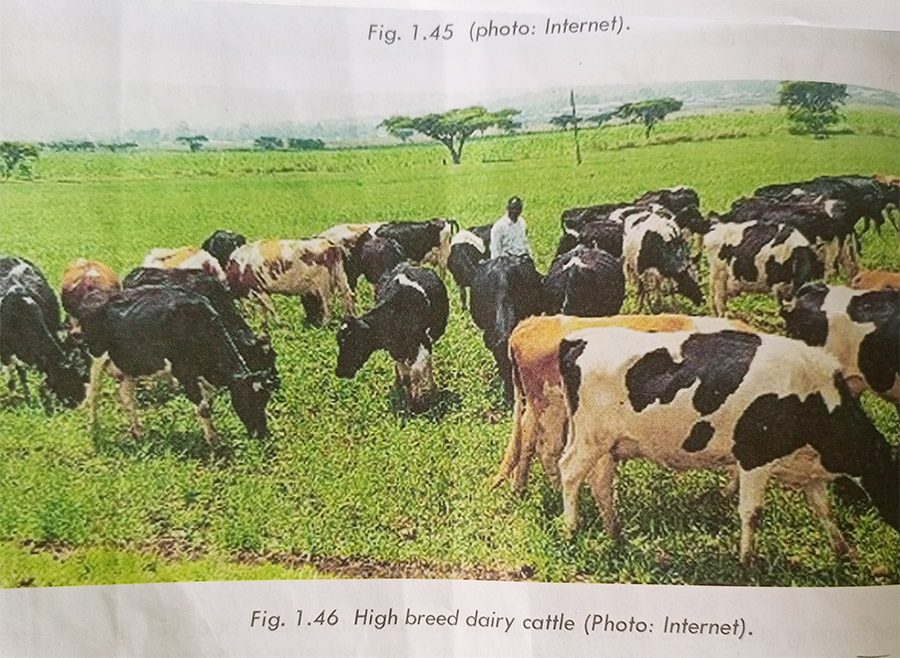
Study the photograph provided above and answer the questions that follows.
Giving reasons for your answer, identify the type of photograph.
- State the characteristics of the form of animal rearing in the photograph.
- Giving evidences from the photograph, describe the factors favouring the form of animal rearing in the photograph.
- Outline the economic importance of animal rearing to the people living in the area.
- Identify the area where the photograph could have been taken.
N.B. When giving evidences from the photograph, always refer to the different parts of the photograph.
Example Two
Study the photograph provided below and answer the questions that follows.
Identify the economic activity taking place in the photograph.
b) Giving evidences from the photograph, describe the factors favouring the above economic activity in the photograph.
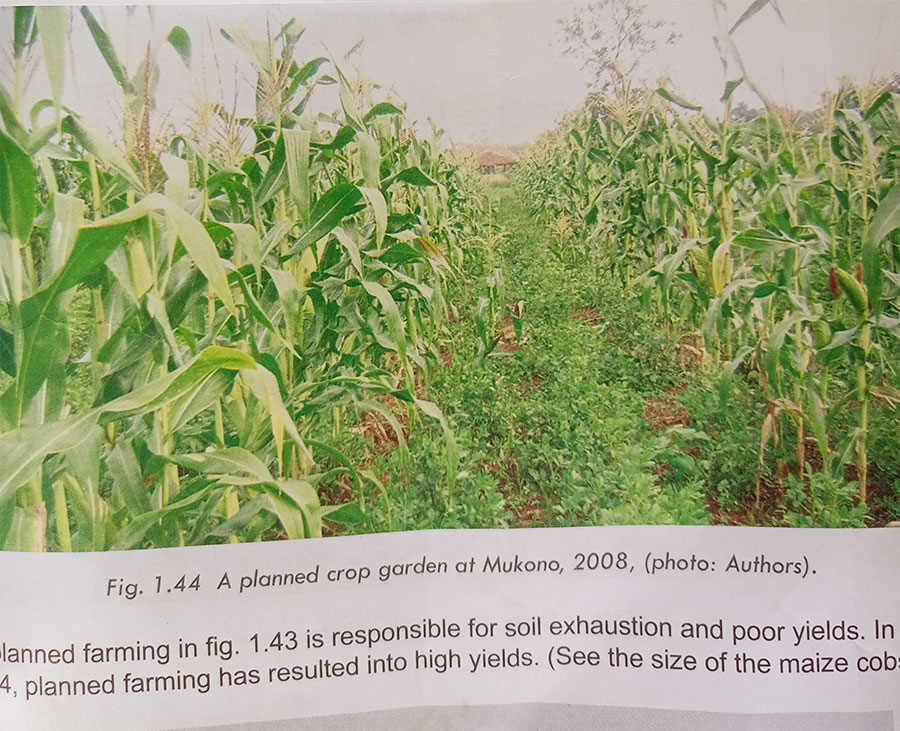
c) Explain the importance to the activity to the people living in the area.
d) Outline the problems faced by the people living in the area.
e) Giving reasons for your answer, identify the area where the photograph could have been taken.
b) Ground oblique photographs – These are taken when the camera man is standing on a higher ground e.g a hill, high building etc than the object and takes the photograph when the camera is tilted at an oblique angle facing the object.
Characteristics of ground oblique photographs.
– The horizon is often seen.
– They cover a relatively large area.
– The objects are shown in three dimensions.
– The tops of objects are seen.
– They show the panoramic view of the country side.
– The size and height of objects are greatly reduced.
Example one:
Study the photograph provided below and answer the questions that follows.
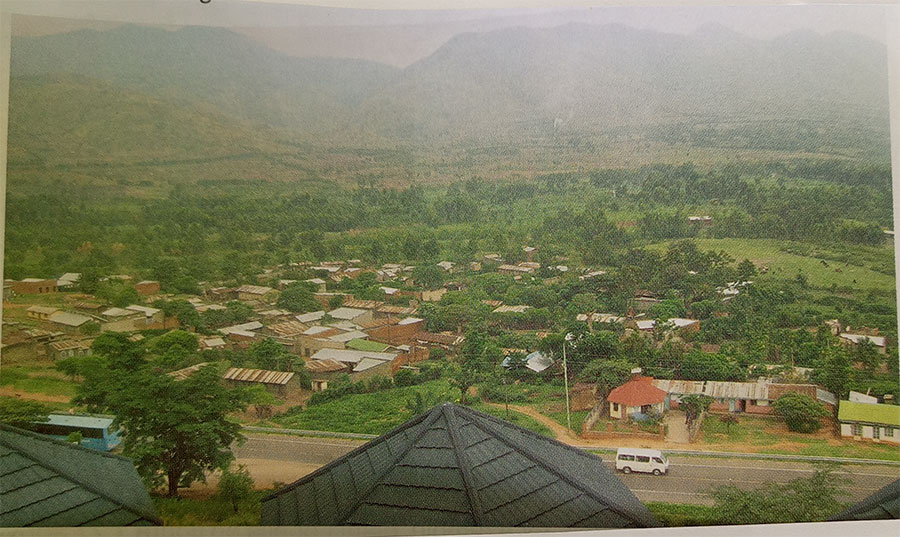
a) Giving reasons for your answer, identify the type of photograph.
b) Describe the relief of the area.
c) Explain the relationship between relief and land use in the area shown in the photograph.
d) outline the problems faced by the people living in the area.
C) Giving reasons for your answer, identify the area where the photograph could have been taken.
Drawing a landscape sketch of a photograph.
The sketch of a photograph is referred to as a landscape sketch.a landscape sketch must always appear in form of simple line drawings.
When drawing a landscape sketch, the following should be noted
– Draw a frame on the answer sheet of the same size and shape as that of the photograph given.
– Study the features in question and identify their location basing on the division of a photograph i.e. background, middle ground and fore ground.
– Draw the features in the frame while considering their size and correct position the same way they appear in the photograph.
– The features in the foreground on the photograph should also be placed in the foreground of the sketch and not in the middle or background.
– mark and name the features drawn on the sketch.
– Don’t include the features that are not required by the question.
– Don’t color and avoid unnecessary shading.
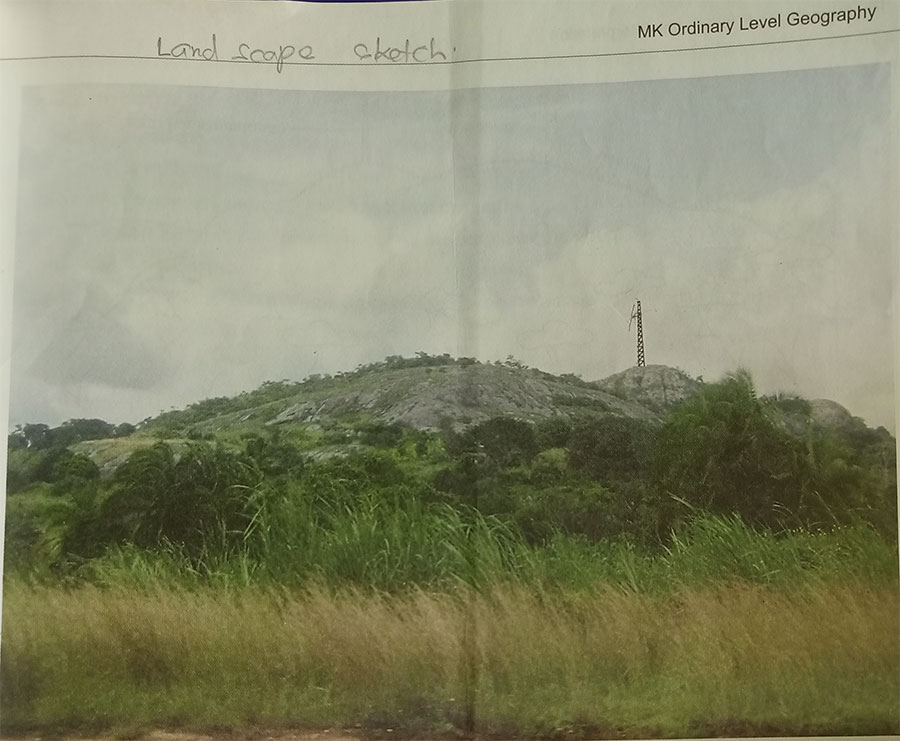
Example One
Study the photograph provided above and answer the questions that follow.
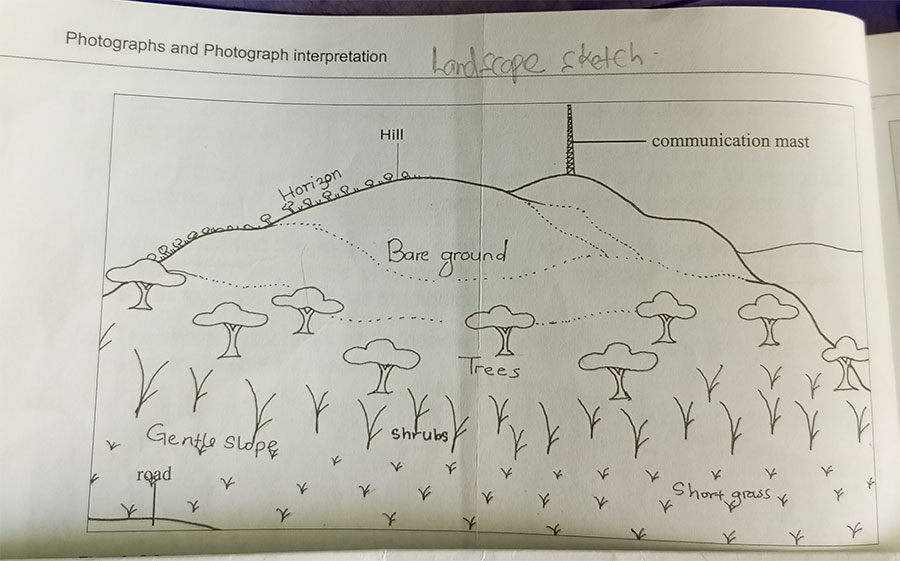
a) Draw landscape sketch of the area and on it mark and name;
– A hill
– horizon.
– gentle slopes
– bare ground.
– communication mast.
– vegetation types.
b) Describe how a hill in the background was formed.
c) outline the problems faced by the people living in the area.
d) Identify the area where the photograph could have been taken.
Possible answers.
A landscape sketch of the area showing a hill, gentle slopes, vegetation types, horizon, bare ground and a communication mast.
Do the remaining parts.
Example Two
Study the photograph provided below and answer the questions that follow.
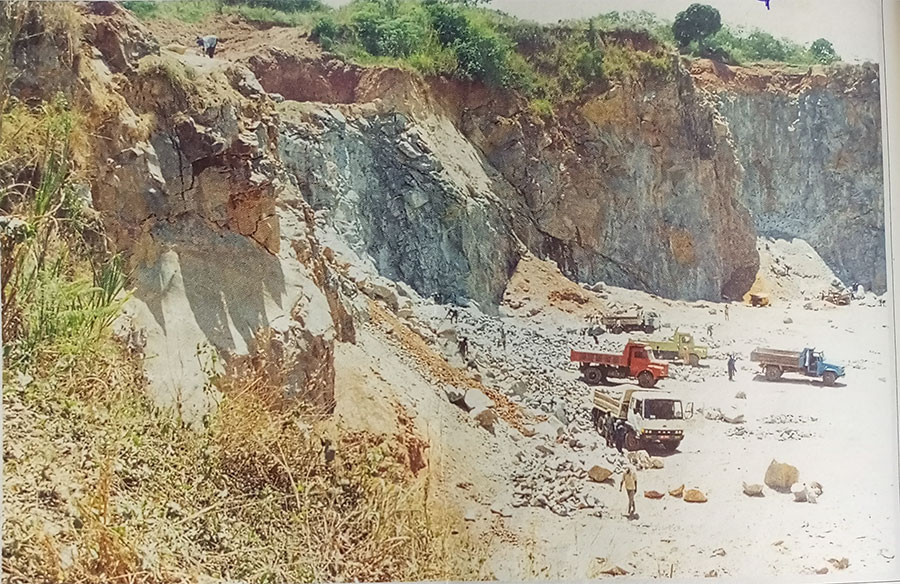
Draw a landscape sketch of the area showing
– vegetation types.
– rock out crop
– excavated ground
– horizon
– rock aggregate
b) identify the mining method used in the photograph
c) Describe how the method mentioned above is used.
d) Giving evidences from the photograph, describe the factors favouring the above economic activity.
C) Explain the importance of the activity to the people living in the area.
Example Three
Study the photograph below showing the tourism site in East Africa.
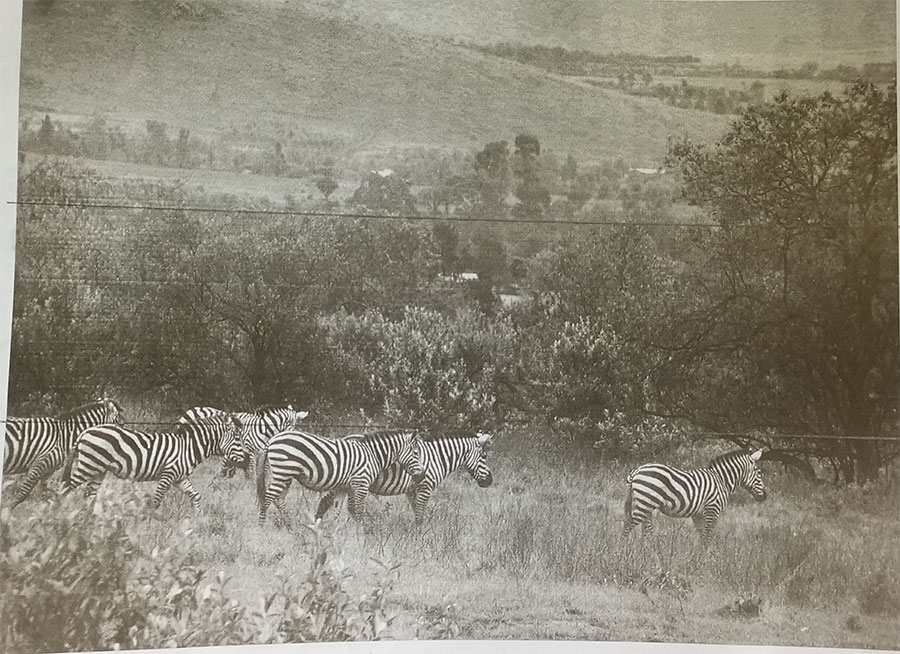
a) Name the tourist attractions found in the
– foreground
– middle ground
– back ground.
b) Identify any three characteristics of the tourist attraction found in the middle ground.
c) Draw a landscape sketch of the area shown on the photo and on it mark and name.
– three tourist attractions mentioned in (a) above.
– water body
– two settlements.
d) Describe the factors favouring the development of tourism in the area shown in the photograph.
e) Describe the relationship between relief and land use.
f) Giving evidence from the photograph, name any one area in East Africa where the photograph could have been taken.

